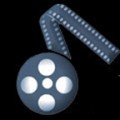(Ray Brandes introduces long-lost film of a fleeting San Diego phenomenon.)
 The folk-rock explosion of the 1960s was ignited by the release of the Byrds’ 1965 hit cover of Bob Dylan’s “Mr. Tambourine Man.” The group’s characteristic three-part harmonies, jangly 12-string guitar and folk-music sensibilities spawned hordes of sincere flatterers and helped boost the sales of contemporary artists who shared the same influences. Los Angeles became the epicenter of a shaggy-haired, granny glasses and moccasins-wearing subculture that included the likes of Love, the Leaves, the Dovers, the Bees, and the Mamas and the Papas.
The folk-rock explosion of the 1960s was ignited by the release of the Byrds’ 1965 hit cover of Bob Dylan’s “Mr. Tambourine Man.” The group’s characteristic three-part harmonies, jangly 12-string guitar and folk-music sensibilities spawned hordes of sincere flatterers and helped boost the sales of contemporary artists who shared the same influences. Los Angeles became the epicenter of a shaggy-haired, granny glasses and moccasins-wearing subculture that included the likes of Love, the Leaves, the Dovers, the Bees, and the Mamas and the Papas.
 Eighteen years later and a hundred miles to the south, Carl Rusk, Ray Brandes, Mark Zadarnowski, Bill Calhoun and David Klowden made a valiant attempt to resurrect the folk-rock sound and style. For a brief, shining moment in a year that saw the birth of both the Tell-Tale Hearts and the Gravedigger V, the Mystery Machine kicked up a little dust and then vanished as quickly as it had appeared. There were only three public performances: August 12, 1983, at San Diego’s Headquarters; August 20, 1983, at Orange County’s Radio City; and the final gig August 26, 1983, at Los Angeles’ Lhasa Club.
Eighteen years later and a hundred miles to the south, Carl Rusk, Ray Brandes, Mark Zadarnowski, Bill Calhoun and David Klowden made a valiant attempt to resurrect the folk-rock sound and style. For a brief, shining moment in a year that saw the birth of both the Tell-Tale Hearts and the Gravedigger V, the Mystery Machine kicked up a little dust and then vanished as quickly as it had appeared. There were only three public performances: August 12, 1983, at San Diego’s Headquarters; August 20, 1983, at Orange County’s Radio City; and the final gig August 26, 1983, at Los Angeles’ Lhasa Club.




 Here's a first post crafted in response to my
Here's a first post crafted in response to my 



